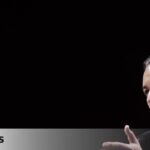
Pope Francis’ death began consecrated traditions that will ultimately lead to the election of a new Pope by the cardinals – although some aspects of the process have evolved; Understand how the process unfolds
Pope Francis’ death on Monday (21) began consecrated traditions that will ultimately lead to the election of a new Pope by the cardinals-although some aspects of the process have evolved. See how the process unfolds.
With the death of Pope Francis, announced by the Vatican on Monday, the Roman Catholic Church will begin elaborated and rooted rituals in the tradition that mark the end of a papacy and lead to the beginning of the next.
Also read:
+ Pope Francis, the first pontiff of the Americas, dies at 88
+ Left Pope? Francisco was a declared defender of the poorest
+ Remember the letter that Pope Francis sent Lula during his political persecution
Vacant
The Catholic Church enters a period known as “Vacant Headquarters”, during which a senior cardinal assumes everyday affairs until a new Pope is elected.
The cardinal, called “Camerlengo” (“Chamber”), in this case will be the Irish American American Kevin Farrell, appointed to the position by Francisco in February 2019.
He is the only high employee in the hierarchy of the Church to remain in office, with all others forced to resign after the Pope’s death.
Traditionally, its main role is to certify death, which is done by beating three times on the pontiff’s forehead with a special silver hammer and shouting its birth name.
Camerlengo is also accused of destroying the “fisherman ring”, a golden synete ring made especially for each new Pope and that was formerly used to seal documents.
Originally, its destruction was to avoid counterfeiting, but today the act – in the presence of the cardinals in its first meeting of the Vacant Headquarters – simply symbolizes the end of a papacy.
Simpler funeral
Cardinals from around the world will hold a series of meetings known as “general congregations”.
They will decide on the date of the funeral, which should take place between the fourth and sixth day after death, and the organization of the “Novamdiales”, the nine days of mourning.
Francis’ immediate predecessors were buried in St. Peter’s Basilica in the Vatican, but he asked to be buried in the Basilica of Santa Maria Maggiore in Rome.
Your body will be placed inside a single wooden coffin and zinc – again breaking the tradition, with anterior popes buried in three coffin, lead and elm, placed inside each other.
The change in funeral rituals would better reflect what Francis sees as the role of the Pope as “pastor and disciple of Christ, not a powerful man of this world,” said a high authority.
Francis’ open coffin will be exposed to the worship of the faithful in St. Peter’s Basilica, ending the display of papal bodies on a high platform, supported by pillows, as is tradition.
Or conclave
General congregations are also a good way to select “Papabili” – potential successors of Francis.
Congregations will set the date for the beginning of the conclave no less than 15 and no more than 20 days after the Pope’s death.
In a system originally from the thirteenth century, the Conclave brings together cardinals under 80 in particular to choose the next Pope among his peers.
Currently, there are 135 so -called “Cardinal Voters”, 108 of which were appointed by Francis.
Of these, 53 are from Europe, 20 are from North America, 18 are from Africa, 23 from Asia, four from Oceania and 17 from South America.
Conclave literally means “with a key”, reflecting the fact that cardinals should remain until a new Pope is found.
Since the late nineteenth century, all conclaves have been held in the Sistine chapel, a Renaissance jewel adorned with Michelangelo’s famous famous.
The cardinals swore absolute secret, under penalty of excommunication during the vote.
Two votes are held in the morning and two in the afternoon every day, until a candidate gets two thirds of the votes.
At the end of each session, the banknotes are burned in a stove near the chapel, releasing smoke over the apostolic palace.
Smoke becomes black after each unsuccessful and white vote when the vote is successful.
The bells of St. Peter will play accompanying the white smoke.
Karol!
Once elected, the new Pope will be led to a small sacristy near the Sistine Chapel, known as “Sala Delle Lacrima”, or tears room, where he may reflect on his future.
The dean of the Cardinal College, currently Cardinal Giovanni Battista Re, will ask the newly seated pontiff if he accepts his election and what name he would like to use, and he will immediately become bishop of Rome and Papa.
The new Pope is helped to wear his robes (three sets are prepared, of different sizes) and, one by one, the cardinals pay him tribute.
Shortly thereafter, he appears in the Gallery of St. Peter’s Basilica. Cardinal Senior Deacon, currently Renato Raffaele Martino, will pronounce the famous Latin phrase: “Habemus Papam!” (We have a Pope!).
With information from France 24 with AFP*
Source: https://www.ocafezinho.com/2025/04/21/apos-a-morte-do-papa-francisco-como-o-novo-papa-sera-eleito/

